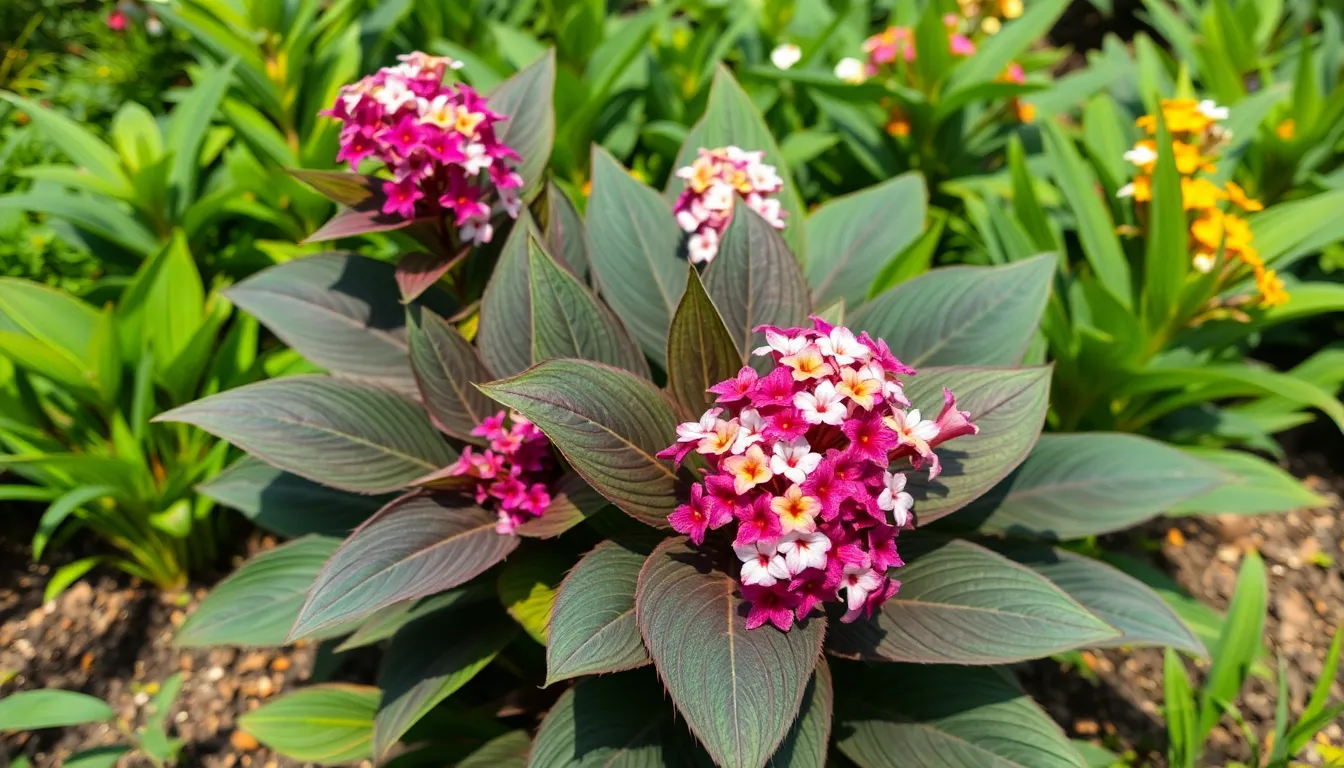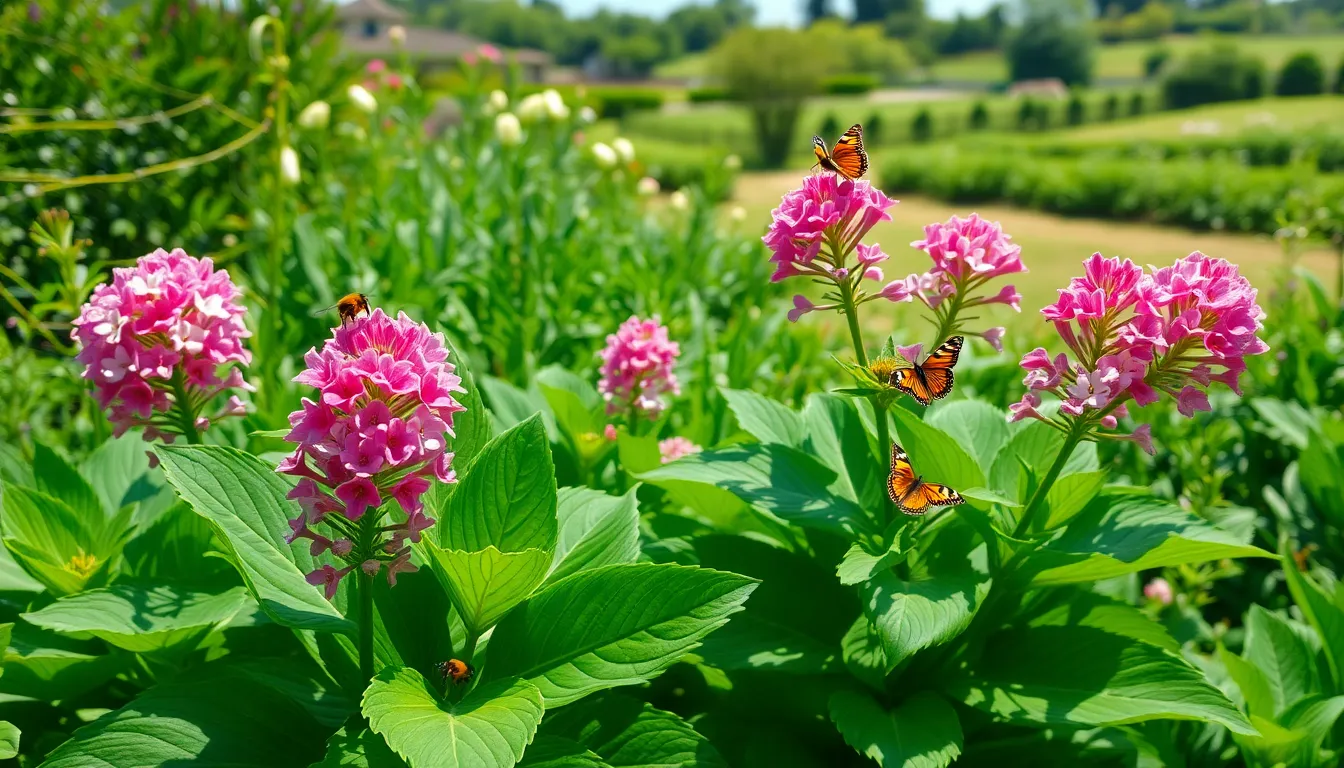In the enchanting world of plants, few can match the charm of chrysipusya. This vibrant gem isn’t just another pretty face in the garden; it’s a powerhouse of beauty and resilience. With its stunning foliage and captivating blooms, chrysipusya has a knack for stealing the spotlight and turning any dull space into a botanical wonderland.
Table of Contents
ToggleOverview of Chrysipusya
Chrysipusya stands out with its striking appearance and robust nature. These plants thrive in diverse environments, showcasing adaptability in various climates. Enthusiasts appreciate their vibrant leaves, which display an array of colors, adding depth to gardens and landscapes.
Cultivated primarily for ornamental purposes, Chrysipusya features blooms that attract pollinators, fostering biodiversity. Each flowering period typically spans several weeks, providing extended visual interest. Gardeners often select this plant for its visual appeal and low maintenance, making it a favorite among both novice and experienced horticulturists.
Pruning Chrysipusya encourages bushier growth, supporting a fuller appearance and enhancing flower production. It flourishes in well-draining soil, benefiting from regular watering without waterlogging. Fertilization during the growing season promotes vigorous development, ensuring the plant showcases its beauty throughout the year.
Thrive and flourish, Chrysipusya can reach heights of up to 4 feet, depending on the specific variety. In addition to its aesthetic value, the plant possesses resilience against common pests and diseases, ensuring longevity in garden settings. Employing this remarkable plant not only elevates garden aesthetics but also supports ecosystem health.
Cultivating Chrysipusya turns any space into a vibrant oasis, contributing to landscaping efforts with ease. Its colorful foliage and attractive blooms create a stunning focal point, enhancing outdoor environments. Gardeners increasingly recognize the value of incorporating this extraordinary plant into their gardens for improved beauty and ecological benefits.
Characteristics of Chrysipusya

Chrysipusya exhibits distinct traits that contribute to its appeal.
Physical Traits
Chrysipusya features lush, vibrant leaves that are typically broad and deeply colored. Each leaf can measure up to 6 inches long, providing significant visual interest. Flowers appear in clusters, showcasing an array of colors including purples, pinks, and whites. When in bloom, these flowers attract various pollinators, enhancing the plant’s ecological role. In maturity, chrysipusya can reach heights of up to 4 feet, creating a striking presence in gardens. Its robust structure and dense foliage create a bushy appearance, adding depth to any landscape.
Habitat and Distribution
Chrysipusya thrives in diverse habitats, ranging from tropical to temperate zones. It prefers well-draining soil and does well in full sun to partial shade. Various regions around the world cultivate this plant, highlighting its adaptability. Gardeners often plant chrysipusya in USDA hardiness zones 5 to 9, where it flourishes best. It can tolerate a range of climates, making it suitable for different environments. Locations that provide ample sunlight and protection from harsh winds promote its growth and vitality. As a result, chrysipusya establishes itself widely, appreciated by enthusiasts and landscape designers alike.
Ecological Role of Chrysipusya
Chrysipusya plays a vital role in local ecosystems, contributing to biodiversity and stability. Its vibrant flowers attract a variety of pollinators, including bees and butterflies, which help in the reproduction of many nearby plants. Increased pollinator activity enhances fruit and seed production in local flora. The plant provides shelter and nesting sites for small wildlife, supporting the food web within its environment. Soil enrichment occurs as fallen leaves decompose, adding organic matter and nutrients. These processes contribute to a healthy ecosystem and promote resilience against environmental changes.
Impact on Local Ecosystems
Local ecosystems benefit significantly from the presence of chrysipusya. The plant’s vibrant blooms serve as crucial resources for pollinators, directly impacting local food sources. Many species rely on these nurturing environments for survival. Encouraging a variety of insects leads to higher rates of fertilization in surrounding plants. Furthermore, chrysipusya reduces soil erosion with its dense root system, promoting soil health and preventing degradation. By supporting numerous animals, including birds and beneficial insects, the plant strengthens ecological balance.
Relationships with Other Species
Chrysipusya maintains symbiotic relationships with various species in its habitat. Many pollinators find essential nourishment in its flowers, fostering biodiversity. This interaction promotes plant reproduction and increases genetic variation among local species. In turn, beneficial insects provide pest control, reducing reliance on chemical pesticides. The dense foliage creates microhabitats for various organisms, including insects and small mammals. Such coexistence enhances ecosystem resilience, allowing species to adapt to environmental shifts. These intricate connections highlight chrysipusya’s significance within its ecosystem.
Uses of Chrysipusya
Chrysipusya offers a variety of uses, ranging from medicinal applications to cultural significance. Its versatility enhances both health benefits and cultural practices.
Medicinal Applications
Chrysipusya is recognized for its potential medicinal properties. Some studies suggest that extracts from this plant may have anti-inflammatory and antioxidant effects. Traditional herbalists often utilize chrysipusya to treat minor ailments such as digestive issues and skin irritations. It may also aid in boosting the immune system, supporting overall health. Various formulations and teas can include chrysipusya for holistic wellness approaches. When used appropriately, it can be an effective complement to standard treatments.
Cultural Significance
Chrysipusya carries rich cultural significance across different communities. In several cultures, it symbolizes resilience and beauty, often featured in local folklore and traditions. Festivals may incorporate chrysipusya as a decorative element, adding visual splendor to celebrations. The plant often appears in art and crafts, showcasing its vibrant colors and unique forms. In some regions, chrysipusya serves as a traditional gift, representing goodwill and friendship. Its presence in cultural practices enhances the connection between people and nature.
Conservation Status
Chrysipusya faces various threats impacting its conservation status. Habitat loss due to urban development and agricultural expansion negatively affects its natural environments. Moreover, climate change alters the conditions necessary for its growth, pushing it towards vulnerable classifications.
The International Union for Conservation of Nature classified several populations of chrysipusya as threatened. Factors include invasive species that compete for resources and disrupt local ecosystems. These invasives can hinder the growth of chrysipusya, reducing its ability to thrive in native habitats.
Protection efforts include habitat restoration projects aimed at rejuvenating areas where chrysipusya grows. These initiatives focus on removing invasive species and promoting native plant growth. Collaboration between conservation groups and local communities helps raise awareness and implement sustainable practices.
Certain regions have established biodiversity corridors to support the migration and dispersal of chrysipusya. Conservationists encourage cultivating this species in gardens and landscapes to increase its numbers. By planting chrysipusya, individuals can support local pollinators and foster biodiversity.
Monitoring programs track the health of chrysipusya populations and assess the effectiveness of conservation strategies. Engaging with local gardeners and landscape designers promotes the awareness of this plant’s ecological role. Advocating for its preservation ensures that chrysipusya continues to enrich ecosystems and enhance gardens.
Efforts thus far demonstrate a commitment to safeguarding chrysipusya and its habitats from ongoing threats. Continued support for conservation initiatives is crucial for maintaining this remarkable plant’s presence in our environment.
Chrysipusya is more than just a beautiful addition to any garden. Its vibrant colors and adaptability make it a favorite among gardeners and landscape designers. Beyond aesthetics, it plays a crucial role in supporting local ecosystems by attracting pollinators and providing shelter for wildlife.
The plant’s medicinal properties and cultural significance further highlight its value in human traditions and holistic health practices. As conservation efforts continue, cultivating chrysipusya can contribute to biodiversity and ecological stability. Embracing this remarkable plant not only enhances garden spaces but also fosters a deeper connection with nature.




